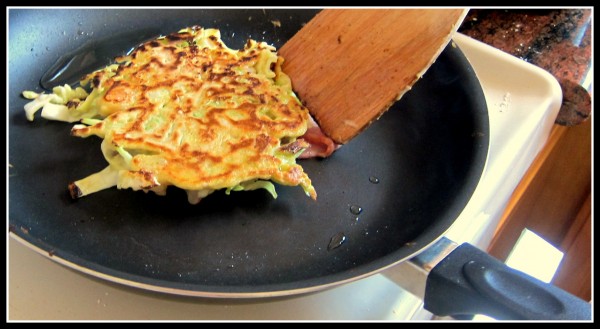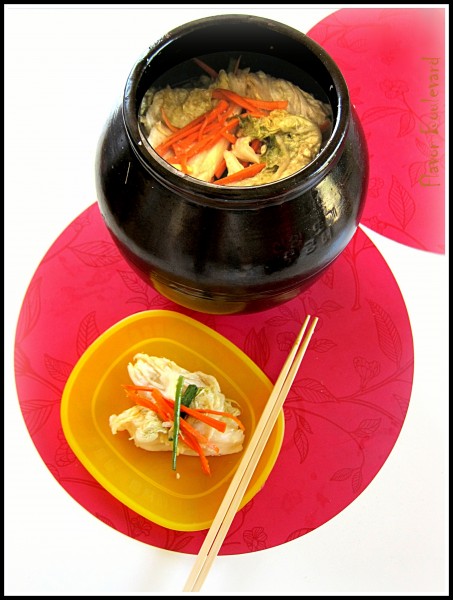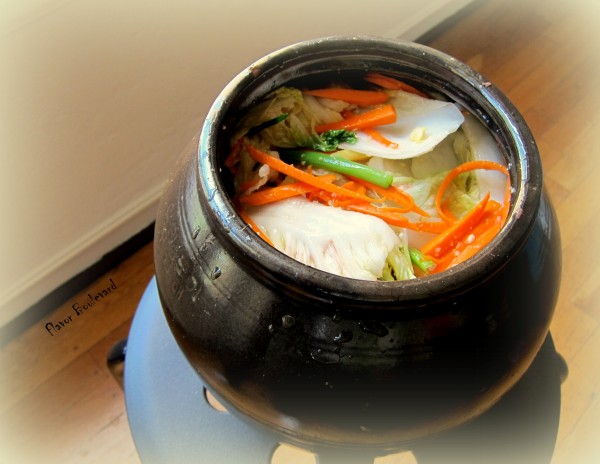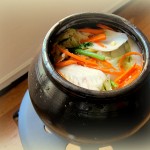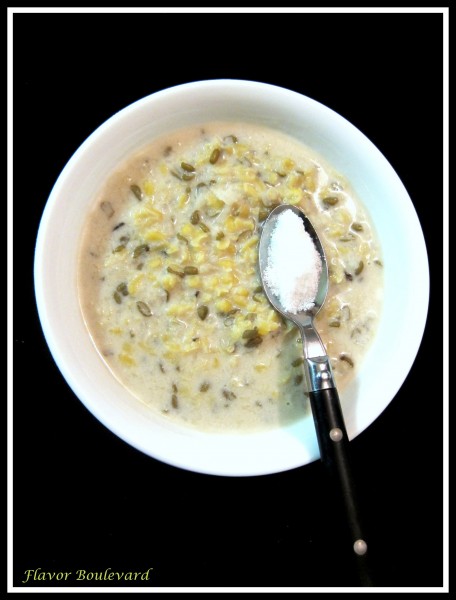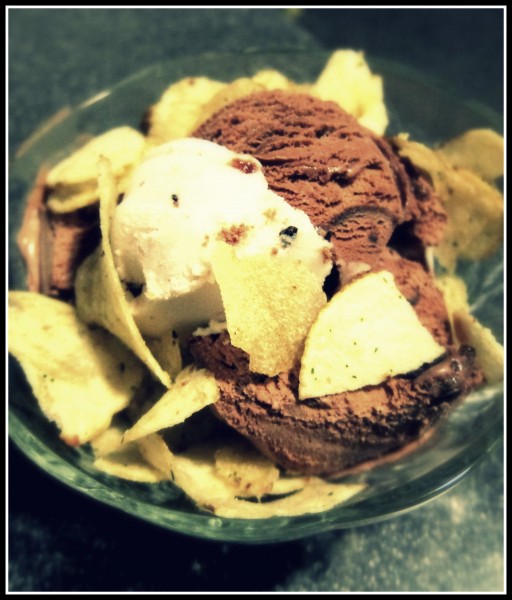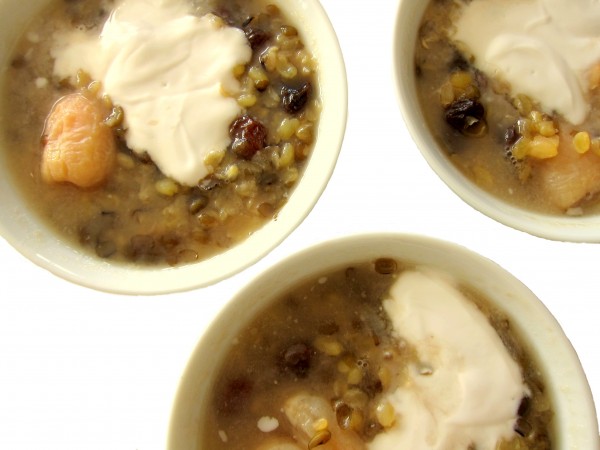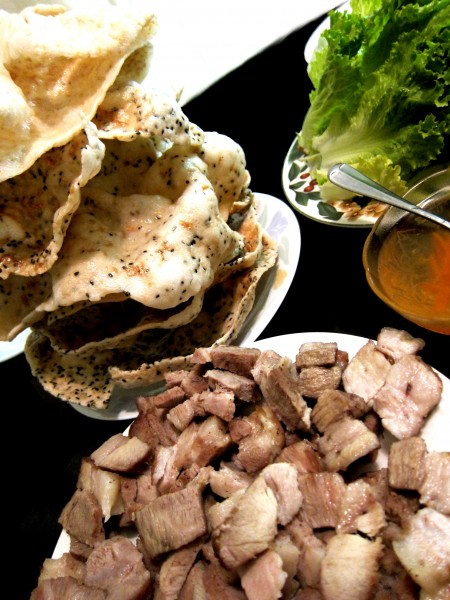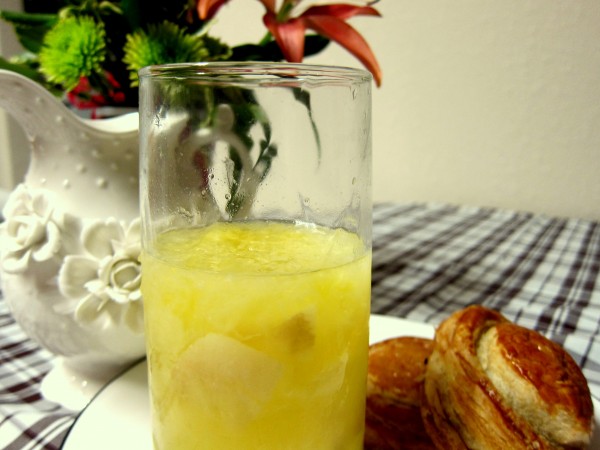– Guest post by Mom, loosely translated by me –
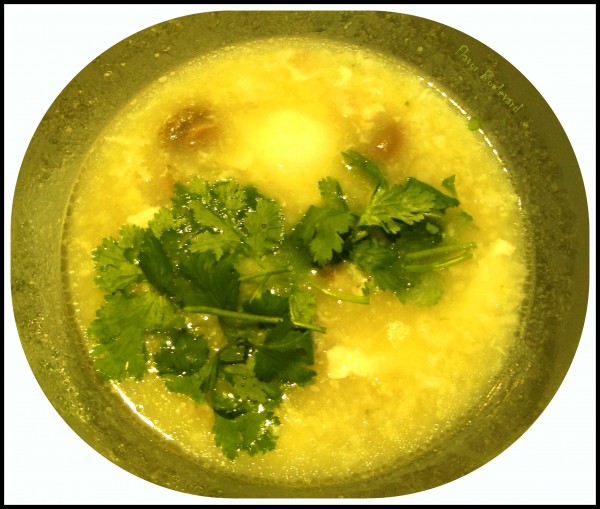
There are mornings, even on weekends, when I wake up feeling like a stone (Mai: she means it figuratively, the supermodel BMI runs in our family 😉) and still have to get out of bed because of the mountain of work waiting. Not work at work, but work around the house. Laundry, cleaning the bathrooms, tidying the bedrooms, grocery, and especially cooking even when I have no appetite. When those mornings happen, I think of something easy to make and easy to eat. Naturally, porridge comes to mind. My daughter doesn’t like porridge, but when she’s not home I can prepare it for her dad and me for lunch and maybe dinner, too. I like porridge: mung bean porridge, fish porridge, chicken porridge, pork porridge… and beef porridge for today.
Beef Porridge (serving 3)
– 1 cup cooked rice
– 2 lb pork bone
– 1 lb ground beef
– 8 oz champignon mushroom
– 1/2 sweet onion, minced
– 1 tbs minced garlic
– salt and sugar to taste (e.g., 1/2 tsp salt, 1 tsp sugar)
– a pinch of ground black pepper
– green onion and coriander
– 3 eggs
Simmer the pork bones to make stock, remove all the white floating foam. Use cooked rice instead of uncooked rice so that the porridge is soft but the grains don’t disintegrate, and the bottom layer doesn’t get sticky and burnt.
Season the beef with garlic, onion, salt, sugar and black pepper. Scoop spoonfuls of meat into the boiling stock. When the stock boils again, add rice. Simmer on low heat for 30 minutes. Do NOT stir. Once the porridge becomes really mushy, add mushroom. In a bowl, whisk up the eggs with chopsticks and dribble it into the boiling stock. Re-season if necessary before turning off the heat.
Garnish with green onion and coriander. Serve hot.
